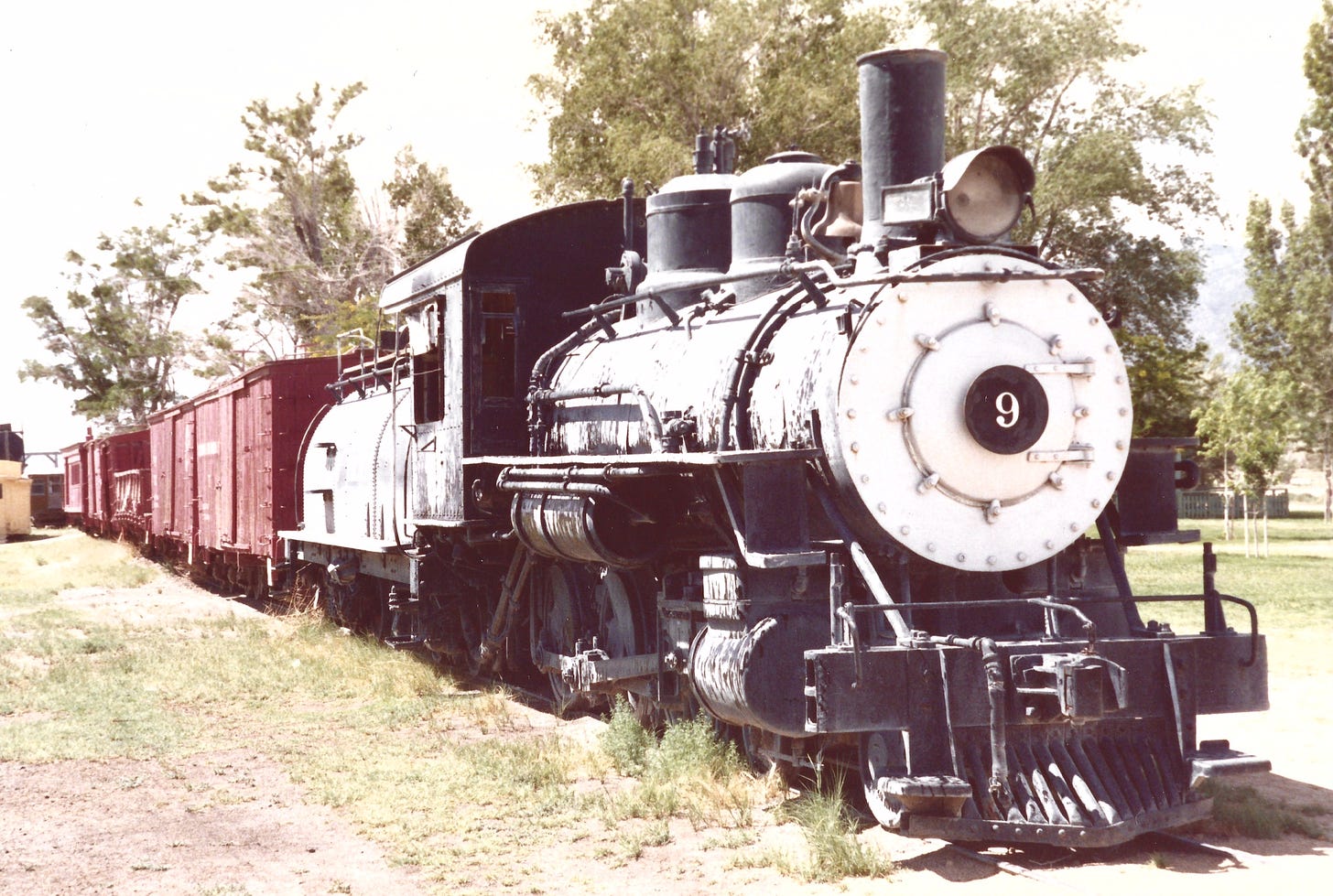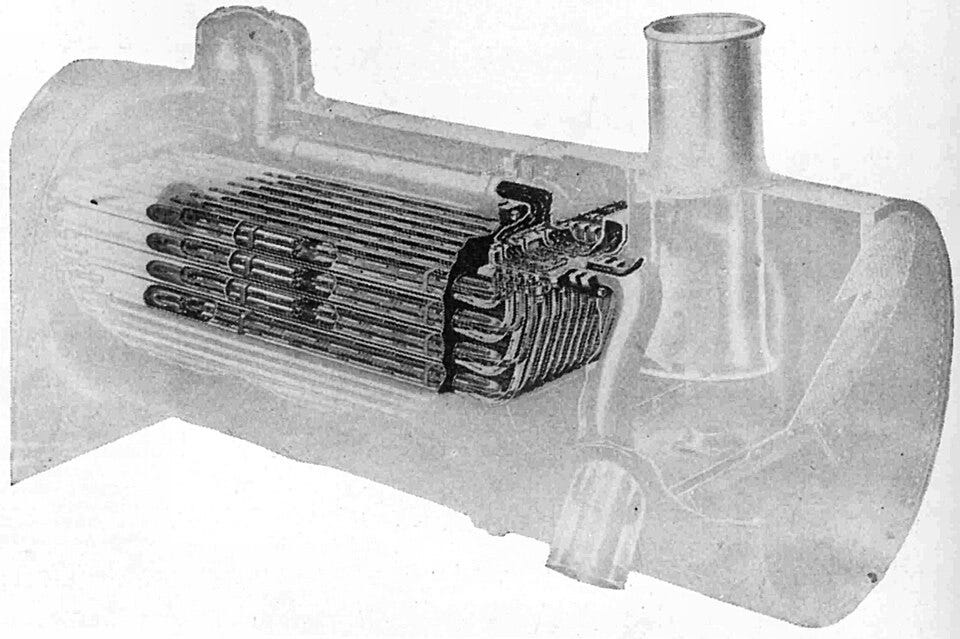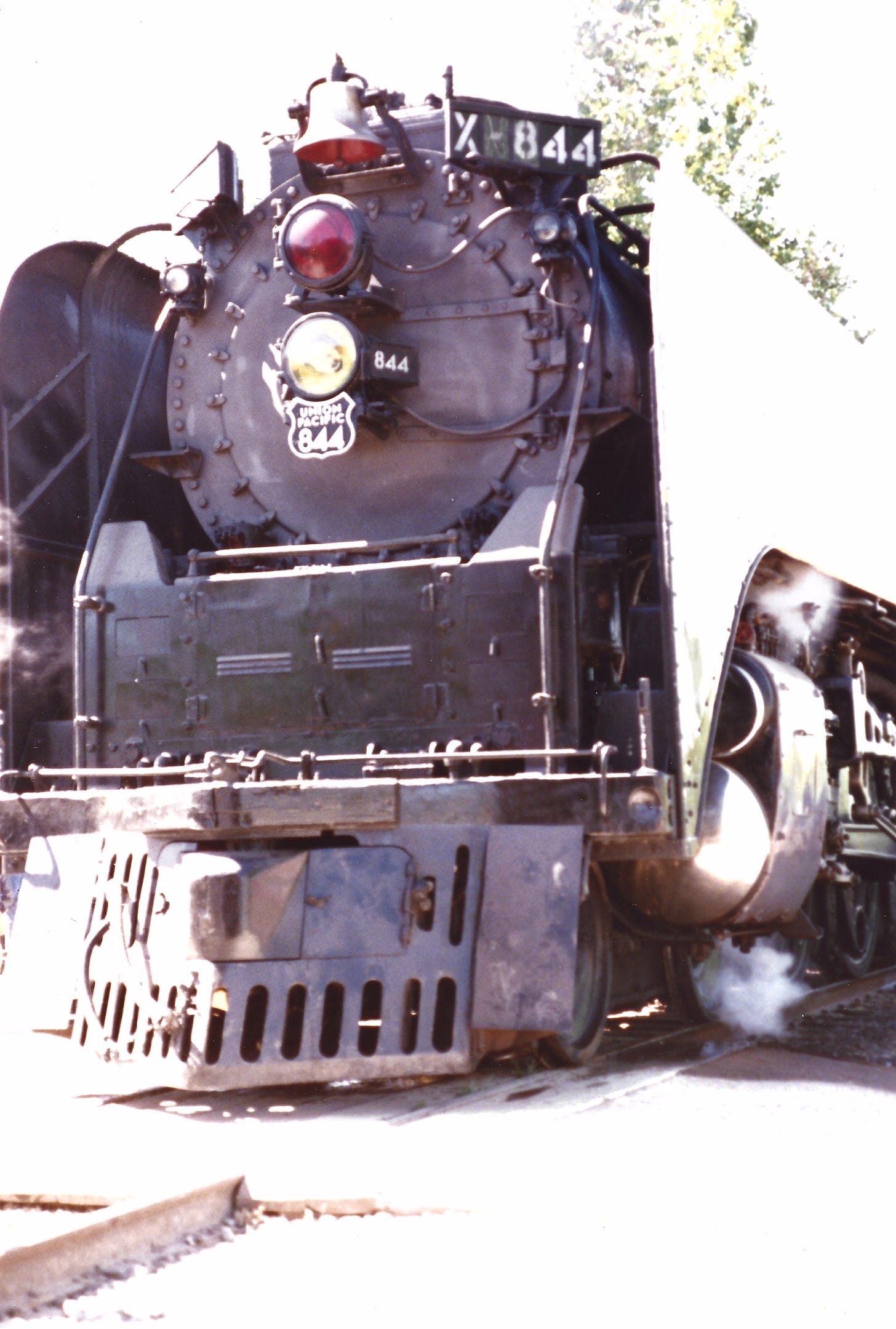
There couldn’t possibly be a site such as this and there be no mention whatsoever regarding steam or, more specifically, steam propulsion or steam technology. That’d be analogous to having a site titled All About Automobiles and excluding information on steam-powered autos or a site called All About Ships and leaving out info on steam-driven ships. That would be unheard of. Which is why I’m taking the time right now to include here, on the All About Trains site, data on the steam locomotive. Though there is one post with the title “Steam” that covers steam railroading’s early development. But, it goes way beyond this as there is way more to steam than that alone.
Textbook Case
Just for the heck of it, I was curious about whether or not the textbook I used in college connected with the thermodynamics course I took had anything in it related to steam as applied to locomotives. My hope was it would. But, alas. It did not. What Thermodynamics[1] did have, on the other hand, on page 2 is a schematic diagram of a steam power plant (call it a close relative of a steam locomotive schematic diagram) and the briefest of explanations. In other words: close but no cigar. I figure it couldn’t hurt to check, just in case.
Major Components
So the major components of this steam power plant depicted in the diagram are the air preheater, boiler, condenser, economizer, generator, pumps (2), superheater and turbine. In a steam locomotive the steam turbine would be replaced with steam cylinders which are indirectly connected to driving rods that are used to turn the locomotive’s driving wheels.

And how this relates to propulsion is, heat applied to water in a boiler, if heated to a temperature of 212 degrees Fahrenheit or 100 degrees Celsius, produced is steam. Now compress that steam in some kind of pressure vessel, and you can actually make that steam work for you, like, say, in terms of powering a locomotive, a car or ship.
As well, there must be a fuel source with which to start and build a fire, a container or enclosure whereby a fire can be started and developed which must also incorporate an exit chute of some kind that serves to let free the exhaust or smoke that comes as a result of that process. That container in steam-locomotive applications is known as a firebox.
In the case of the fuel coal, what isn’t burned completely (the residue that’s left over, in other words) takes the form of either cinders or ash, which is otherwise referred to as waste. That’s burned coal’s waste byproduct. And, that’s pretty much it.
Inputs, Outputs And Processes
The internal workings of a steam locomotive at its most fundamental level are, well, pretty basic.
There are what’s known as inputs, outputs and processes.
The inputs are what’s put or fed into the apparatus like fuel (coal, oil, wood, etc.) and water. The outputs, meanwhile, are what’s, well, outputted from the engine (steam, water, smoke, coal cinders, exhaust). The processes furthermore relate to the steps, more or less, that the inputs undergo to get the steam engine to do what it needs to, to operate. It’s as simple and as complicated as that.
So really simply, heat must be applied to water to turn it into steam (water’s vapor state). To accomplish this, the fuel source is ignited. That process is done in a firebox.
Meanwhile, once the steam is produced, in order to make it work for purposes needed in a particular application, it must be pressurized and sent to a specific energy transformation device such as a steam whistle, for example, where the steam is utilized to create audible sound (an output). Of course, the fed steam is also used to drive or power or propel the locomotive. This is done through all kinds of mechanical workings which is really beyond the scope of this presentation.
However, to satisfy the requirements of putting together an introduction, this should suffice. I’m following the tenet having the acronym KISS or “keep it simple, silly”.
ACE 3000
As it relates, head executive of American Coal Enterprises, Ross Rowland Jr., concerned with conditions brought on by the 1970s oil crisis, began the ACE 3000, a project he spearheaded that was to produce a modern steam locomotive design aimed at cutting the costs of the operation of railroads’ diesel-locomotive fleets which were becoming more and more expensive. Rowland, Jr’s. solution was to create a steam locomotive that relied on coal as the fuel that “could make steam just as efficient as diesels, such as multiple-unit operation, and computer-operated boiler vigilance,” this according to information published at Wikipedia.[2]
So, in trials held on CSX tracks skirting the New River between the towns of Huntington and Hinton in West Virginia, a modified Chesapeake & Ohio 4-8-4 “Greenbrier” steam locomotive (renumbered 614-T — “T” for “Test”) was pressed into service expressly for the purpose of determining the efficacy of Rowland, Jr’s. prototype.
Long story short, the locomotive apparently didn’t pass muster and that’s as far as the proposed program went.
In Conclusion…

A locomotive, when push comes to shove, is really nothing more than a power plant. And what is a power plant? It’s an apparatus that produces energy which in turn serves a purpose, like generating electricity to power, say, a city. That’s all a locomotive is.
Epilogue
I’m really fortunate to have seen mainline steam in action. When I was born in 1953, steam holding down mainline assignments were few and far between. In fact, I didn’t see my first steam-locomotive-powered train until I was around 12 or 13. The locomotive was pulling a passenger consist on what I would guess was an excursion. And, I just barely caught a glimpse of it; in other words, I nearly missed seeing it at all!
Now, there’s all kinds of ways to see steam locomotives — active or dynamic and static alike. The fire-eating, smoke-belching contraptions are oftentimes displayed in parks; they are housed in museums (railroad-themed or otherwise); they’re parts of collections of real operating railroads; and, a group called the Live Steamers have sessions where they spend time working on and operating scaled-down versions of the full-sized versions that actually look and sort of sound like the real thing. It’s amazing what one can find if one tries.
I remember on a cross-country trip, I took a detour in Colorado to visit the Royal Gorge which, incidentally, besides having a river also has a railroad running through it. It was up on one of the tops of the geologic formations where the separation is in between that forms the chasm itself, that on display sits a steam locomotive. I saw it when I visited the site in the late 1970s and I would assume it’s still there.
And, finally, I will say that the relics that remain, their presence is important from the standpoint of educating people young and old alike, and providing examples of what railroading of a bygone era was like.
Without the steam locomotive’s contribution, it’s really tough to say where we would be technologically speaking today. So, there’s value in this aspect of history.

To be continued.
Notes
Van Wyler, Gordon J., Thermodynamics, John Wiley & Sons, Inc., 1959, p. 2.
Wikipedia, “ACE 3000,” https://en.wikipedia.org/wiki/ACE_3000
Updated: Apr. 1, 2025 at 6:31 a.m. PDT.
Image credits: Carl Stutzman, collection of Alan Kandel (1st, 3rd); 1922 Locomotive Cyclopedia of American Practice via Wikipedia (2nd); Alan Kandel (4th)
All material copyrighted 2025, Alan Kandel. All Rights Reserved.



